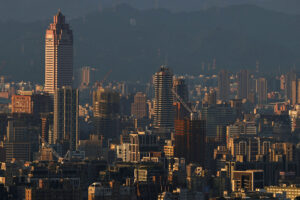WASHINGTON – U.S. consumer spending increased more than expected in April, boosting the economy’s growth prospects for the second quarter, and inflation picked up, which could see the Federal Reserve keeping interest rates higher for some time.
Consumer spending jumped 0.8 percent last month, the Commerce Department said on Friday. Data for March was revised up to show spending gaining 0.1 percent instead of being unchanged as previously reported. Economists polled by Reuters had forecast consumer spending, which accounts for more than two-thirds of U.S. economic activity, rising 0.4 percent .
Last month’s surge in consumer spending tempered economists’ expectations for a sharp slowdown this quarter. Though consumer spending accelerated at its fastest pace in nearly two years in the first quarter, much of the growth was concentrated in January. Weakness in February and March set consumer spending on a lower growth trajectory heading into the second quarter.
Consumer spending is being supported by strong wage gains in a tight labor market. It added to labor market resilience, a rebound in factory production and pickup in business activity in suggesting that the economy was regaining speed after growing at a 1.3% annualized rate in the first quarter.
Still, consumer spending has slowed since surging in January as Americans grow more price-sensitive.
Government social benefits are also dwindling and most lower-income households are believed to have depleted savings accumulated during the COVID-19 pandemic.
Credit has also become very expensive following 500 basis points worth of interest rate increases from the Fed since March 2022, when the U.S. central bank embarked on its fastest monetary policy tightening campaign since the 1980s to tame inflation. Banks are also tightening lending following the recent financial market turmoil.
Minutes of the Fed’s May 2-3 policy meeting published on Wednesday showed policymakers “generally agreed” that the need for further rate hikes “had become less certain.”
The personal consumption expenditures (PCE) price index increased 0.4 percent in April after rising 0.1 percent in March. In the 12 months through April, the PCE price index increased 4.4 percent after advancing 4.2 percent in March.
Excluding the volatile food and energy components, the PCE price index climbed 0.4 percent after rising 0.3 percent in March. The so-called core PCE price index increased 4.7 percent on a year-on-year basis in April after gaining 4.6 percent in March. The Fed tracks the PCE price indexes for its 2 percent inflation target.


